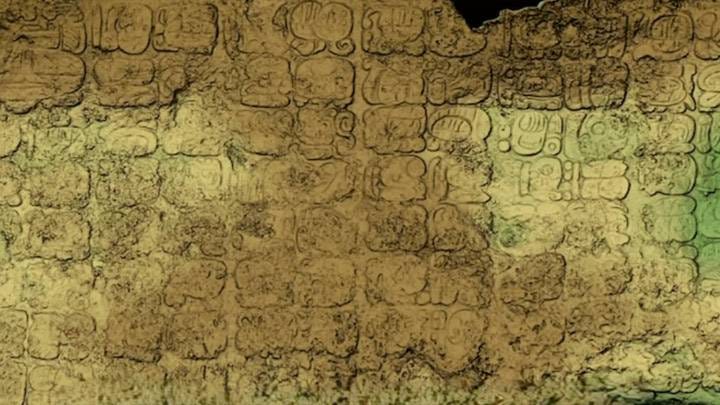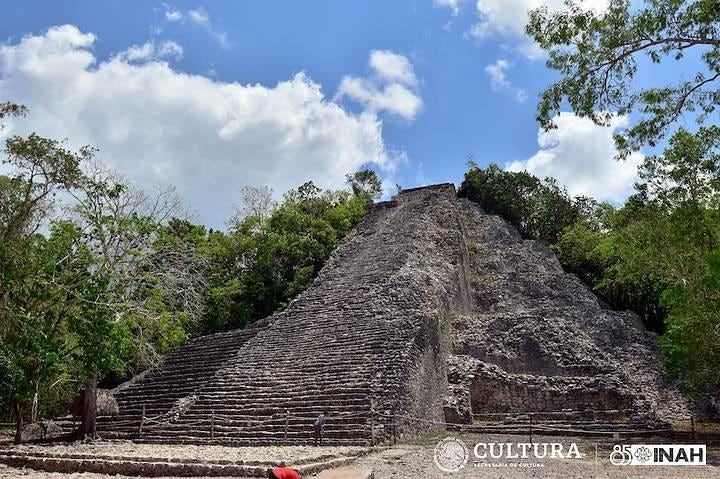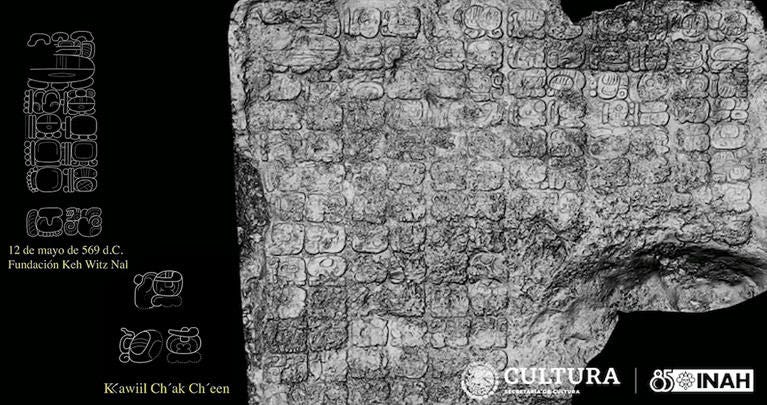# Remarkable Discovery: Ancient Mayan Glyph Panel Found
Written on
Chapter 1: Unveiling the Past
A remarkable archaeological find has emerged from the depths of a sacred pool near Nohoch Mul, a towering pyramid in the Cobá archaeological site of Quintana Roo. The excavation uncovered a sizable stone panel inscribed with 123 Mayan glyphs, believed to date back to 569 AD. A preliminary analysis of the inscriptions suggests they mark the founding date of the town known as Keh Witz Nal, or 'Deer Mountain,' specifically May 12, 569 AD. Furthermore, this analysis introduced the name of a ruler, K’awiil Ch’ak Chéen, for the first time, thereby bridging a gap in Cobá's dynastic history.

The discovery was made approximately 160 meters from Nohoch Muul, the highest structure within Cobá. Diego Prieto Hernández, the general director of INAH, elaborated on the significance of this finding. He mentioned that a total of 14 rulers from this city-state have been documented, including three women, one of whom ruled for an impressive four decades. These leaders embraced the name of the god K’awil, which conferred upon them the status of protective deities for the region. This stone panel not only chronicles historical events but also connects them to the mythical origins of Cobá, referencing guardian deities like Bolón Tz’akab Ajaw, recognized as the 'Lord of countless generations' and associated with the establishment of corn and cocoa dynasties.

The preservation of this ancient Mayan tablet was a priority immediately following its discovery, as environmental factors had previously caused degradation. Researchers undertook meticulous cleaning to remove accumulated soil, salts, and weeds that had obscured the tablet. The restoration process involved applying lime mortar to support the rock, which had developed several cavities that could trap water during heavy rains. Additionally, a detailed recording of the glyphic text was performed, allowing for the creation of three-dimensional models. This innovative approach will facilitate more extensive epigraphic studies and assist in the eventual full decipherment of the inscriptions.

Chapter 2: Insights and Implications
This discovery sheds light on the intricate history of the Mayan civilization, offering invaluable insights into their societal structure and the significance of their rulers. The implications of this find extend beyond mere historical interest, as it enhances our understanding of Mayan culture and its lasting impact on the region.
Source: INAH
If you found this article engaging and wish to show your support, please consider giving it a clap (50 claps) to help it gain visibility. You can also follow me on Medium and subscribe to my newsletter for updates on my latest posts. Additionally, if you appreciate my work, feel free to donate or buy me a coffee (Ko-Fi). Your support is greatly appreciated!